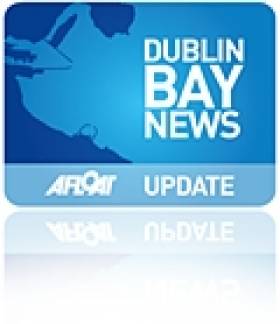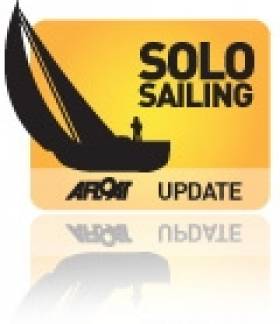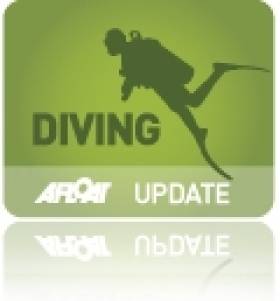Displaying items by tag: solo
#solosailor – A talented UK dinghy and solo sailor Alan Roberts for 2015 has signed a new sponsor for his second Solitaire du Figaro campaign. Alan, has been a professional sailor since 2012 and spent 2013/14 training and competing with the Artemis Offshore Academy, the UK's only solo sailing training centre, honing his solo offshore sailing skills. New sponsor Magma Structures is a global leader in carbon fibre technology and offers world-class structural engineering expertise and flexible composite manufacturing from its base in Portsmouth in the UK.
Alan Roberts, 25, is an accomplished sailor as well as being a Naval Architect graduate with experience in building light-weight composite boats, as well as the design of bluewater cruising yachts and IRC race boats. Twice winner of the coveted Endeavour Champion of Champions dinghy title, Alan is also a former National Champion in the RS200, Merlin Rocket and XoD. In 2014 Alan was first in class in the RORC Cherbourg Race, as well as being the first double hander to finish in his Figaro.
"Magma Structures are title sponsors to my campaign in 2015, funding me primarily for the Solitaire du Figaro race and the races leading up to it. They are a fantastic company and I am very excited to be working with them this season," Alan explained. "It's really good to be able to get on the start line of the Solitaire du Figaro for the second consecutive year. It's really difficult to find sponsorship and I'm really lucky to have them as a sponsor." While Magma Structures come onboard as title sponsor, the Artemis Offshore Academy will still continue to support Alan's campaign in 2015.
Magma Structures are a fast-growing ambitious, young company specialising in the engineering design and manufacture of complex large composite structures. The company has unparalleled experience in the design and manufacture of 60m+ free-standing yacht rigs and works across a number of sectors including construction, transport, civil engineering, oil and gas to provide cutting edge composite products.
Clive Johnson, Managing Director of Magma Structures commented, "We're excited to be sponsoring Alan Roberts in his Solitaire du Figaro 2015 campaign. Alan is an ambitious and hard-working individual who will be taking on some tough challenges in the months to come. Magma Structures is no stranger to challenging projects and is currently building some of the world's most technical and innovative, free-standing masts in excess of 60 metres."
The Solitaire du Figaro is a tough, demanding, single-handed, offshore sailing race. The 2015 race starts 31st May from Bordeaux.
Meath Sailor Launches Mini Transat Campaign for 2015
#ClasseMini – A County Meath sailor has launched a Mini Transat solo sailing campaign for 2015. Tom Dolan has announced his intention to participate in the 2015 Classe Mini Offshore Racing Championship, culminating in the renowned Mini–Transat Race starting on September 19.
The first qualifying race is the 150–miles double–handed Lorient Bretagne Sud Mini race on April 11.
Dolan, who says 'he was never part of a yacht club, never went on sailing holidays and didn't get lessons as a child' only began sailing when his father spotted an old wooden dinghy in the "buy and sell" and the two of them set about fixing it up. He first set sail on the local lake in County Meath age ten.
Starting 'at the bottom' he worked as a volunteer with the Glenans sailing school, which gave him access to bigger boats as well as the open ocean. He has been working professionally in sailing since 2007, in Ireland, France and the Caribbean, accumulating over 10,000 miles at sea.
His CV includes French, Irish and British qualifications and he first crossed the Atlantic at the age of 21. Now he has his sights keenly fixed on offshore racing.
The boats are the smallest ocean racing class in the world, measuring in at 6.5 metres, while carrying almost 100 square metres of sail. The spirit of the class is to make solo offshore racing accessible to every-day people. In modern times it has become a stepping stone into the world of professional offshore racing. I have managed to get my hands on a Pogo 2, one of the most popular brands of Mini 650s, which I hope will give me an even playing field in the class.
The 4000 mile Mini Transat race, which has been running since 1977, is considered by many as one of the most extreme in sailing, due to the combination of the size of the boats involved and the distance covered by them.
Writing in the latest edition of the Beacon, the newsletter of the Baltimore Maritime Centre, Dolan outlines his plans for next season:
'The race starts from Brittany on the western coast of France and is divided into two legs. The first leg involves crossing the infamous Bay of Biscay, known for its mountainous waves which are thrown up as the continental shelf meets the oceanic abyss and depths shoot from 4000 metres to 100 over a distance of a couple of miles.
Once the NW point of Spain is rounded, it's a drag race down the Iberian coast across the mouth of Gibraltar, dodging cargo ships, to the pit stop in Lanzarote, in the Canary Islands.
Following a short stay to await the end of the hurricane season, the race sets off into the vast Atlantic ocean for three weeks (all going well!) at sea, trying to negotiate the best route across on the back of the one way rollercoaster that is the westerly trade winds with no chance of turning back.
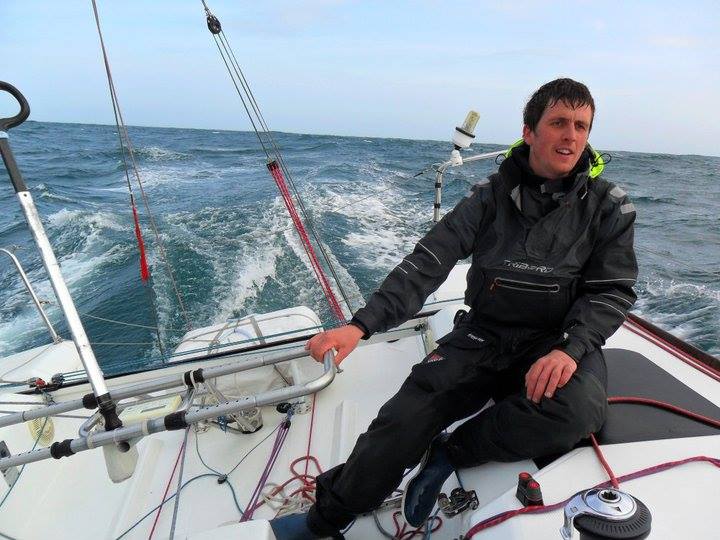
Tom Dolan sailing on his Mini 481. Photo: Tom Dolan Sailing
The finish is the tropical Island of Guadeloupe, in the French Caribbean.
In order to qualify, there are certain challenges that need to be met:
• Complete 1000 race miles in the season
• Complete a 1000 mile solo non-stop qualifying passage from La Rochelle to the Coningbeg buoy and back.
• Complete at least one solo race
Should I manage to qualify, I will be Ireland's third ever entry, and Meath's first!
An intense winter training programme will begin in January at the "Centre d'Entrainement Mini de Concarneau". There I will train alongside 10 of my counterparts in preparation for the season which kicks off at the beginning of April with the "Lorient BSM" race. Before the Transat, there are 6 races in the season, all of which are run along the Breton coast. I aim to do them all but a lot will depend on the budget I will be able to put into the project. So that means throwing on my nice shirt and tie and knocking on board room doors either side of the Celtic sea in the hope of gaining support. The sailing will be the easy part!'
More on facebook
DMYC PY Fleet Is Dead Heat at the Top
#dmyc – With only ten boats on the water there was a little more room than usual on the start line in Race 1, which Sheehy's OK Dinghy took advantage of with a clean pin end start, tacking and crossing the fleet. Half way up the first beat the lead had gone. Results for both races are downloadable below.
Pierre Long had picked a good left shift and was coming across on port in his IDRA14. He had caught right up but only saw the now starboard tack OK Dinghy at the last moment. A slam tack resulted in an extremely unwanted capsize, mere minutes after the start. Ouch.
Frank Hamilton took advantage and sailed out to another race win with Des Fortune's Finn - ably sailed by Colin Galavan - only 40 seconds behind in 2nd. With discards kicking in the Finn and Hamilton's IDRA14 ended the race 1st and 2nd, and joint first overall. Meantime Long had righted the capsized IDRA and fought back to finish 7th!
In Race 2 the start was marred by a windward/leeward between Long's IDRA and Sheehy's OK Dinghy in the seconds before the gun. The OK Dinghy's protest will be heard next week. McCarthy won the start this time, with another clean tack and cross just after the gun showing excellent timing.
In the race itself, McCarthy's Solo sailed off to a solid win, with Galavan taking Des Fortune's Finn to another second place. Long was 3rd (pending protest) with Hamilton unusually far back in 4th.
As in the Laser race there were gains in the corners - but big losses too. In race 1 Hamilton threaded his way through every shift correctly and was clearly the fastest boat out there. In race 2 McCarthy did the same, avoiding big losses and sailing fast and clean to the win.
84 Entries for Mini Transat, Recession Proves No Barrier
#minitransat – The small business that is the Mini does not recognise the crisis. Once more the race for these boats of just 6.50 meters was refuelled, on 30 August, with 84 competitors admitted who had met the full requirements of the organiser and the Mini class. From the semi-professional racer to the businessman on leave and with competitors from nearly every continent, the entry list presents an incredible diversity.
All being well there will be 84 boats at the start and at the moment a dozen navigators still remain on the waiting list eager to find out if they will have the chance to race. Among the final list of entries, there are several who not to have yet confirmed their full funding and on the deadline of September 13, all registration fees (2000 €) must be paid to the organiser. It is therefore likely that the list is still evolving over the next two weeks, after a few withdrawals of candidates who do not have the means to start.
Note also that there are 32 foreigners, from Estonia to Australia, who will come to the start so Douarnenez will resonate with a multitude of accents at the beginning of October.
Runners by vocation and unlikely trades
As always, there are those for whom the Mini Transat is a springboard for a career in professional sailing. Latest to have qualified as a result of their participation in the Transgascogne is Nicolas Boidevezi, the brilliant winner of the Les Sables - Azores - Les Sables in 2012, and Julien Pulvé who, despite a late entry, intends to shake up the hierarchy of favourites.
But others swap their civilian clothes for foul weather gear. Louis Mauffret, Sales Manager of Chantiers du Guip, steps over with some ease from the world of traditional boats, while in the prototypes Yann Le Pautremat abandons his work as a dentist to cross the ocean. David Genest, meanwhile, works as a steeplejack in Paris. He spends his time climbing the facades of buildings for maintenance, or for any mission that requires specialists climbing and rope access skills.
Port Rhu Live: events and exhibitions for 10 days in October
While the competitors are putting the final touches to their preparation, the town of Douarnenez is being mobilized for a wonderful celebration. The 84 boats will be moored from 3 to 13 October 2013 in Port Rhu at the foot of the Place de l'Enfer so that the public can benefit from this arena to open sea where they can admire the fleet.
The Port Musée also participates in its own way by opening a new exhibition on the history of the Mini Transat and what it has brought to the world of racing: fostering some of the greatest offshore racers such as Jean-Luc Van Den Heede, Loick Peyron, Marc Guillemot and Michel Desjoyeaux, the Mini Transat was a true indication of talent. But the Mini is also the starting point for a number of technological innovations, many of which have been later used in the Vendee Globe. Finally, it is a real mix of cultures and backgrounds. The exhibition will open on October 5 and will continue until 17 March 2014.
Douarnenez will strive to share with the public the unique flavour of the Mini Transat, as during the ten days before departure, from 3 October, the fleet will be in full force in the Port Rhu. The prologue of the race will take place on 6 October, in the Bay of Douarnenez, with the contours of the Menez Hom in its glorious fall colours as a spectacular backdrop. For a week, until the great departure, the Mini Transat Village will host partner booths, themed exhibitions and numerous street entertainments. On 5 and 6 October the Port Musée will host a concert of classical music and on 9 October there will be jazz.
In a nutshell, Douarnenez is the place to be in early October if you don't want to miss one of the most beautiful moments in offshore racing.
The course 2013: returns to its origins
Leg 1 - Douarnenez to Arrecife (Lanzarote): 1200 miles.
Leg 2 - Arrecife to Pointe a Pitre: 2800 miles.
Dates
Prologue October 6, 2013.
Start from Douarnenez October 13, 2013 at 13h. Arrival in the Canary Islands between 23 and 26 October 2013.
Start from Canary Islands November 9, 2013. Arrival in Guadeloupe between 23 and 30 November 2013
Missing Solo Sailor Airlifted To Cork Hospital
#Offshore - BBC News reports that a sailor who went missing last week during a solo voyage from Plymouth to Portugal has been located and airlifted to hospital after falling overboard.
The 66-year-old man set off last Monday 10 June but apparently suffered chest injuries during the first night.
Falmouth Coastguard has difficulty contacting the man to determine his position but he was eventually found some 225km off the Isles of Scilly. He was later transported by helicopter to Cork for treatment.
#kenefick – The night has passed and the fleet has now rounded Ile d'Yeu at the Southern most end of the course and are on the long leg North. The winds are now fresher blowing at 20 knots from the South West. The fleet will be under big spinnaker roaring along. We can see the speeds on AIS are hovering around the 9-10 knots.
The accuracy of the ranking taken this morning as the fleet rounded the island is not as reliable as the one at Birvideaux last night but still nevertheless a good indicator. The general order has been respected although there are a few climbers and droppers. After the second night at sea fatigue is certainly taking its toll. Some of the skippers have dropped down the ranking a bit and the sign of strength is to be able to make places and pick people off towards the end of the race. Overnight the number of boats and the time between David Kenefick and first Rookie Claire Pruvot has dropped and David is now just one place and seven minutes behind her. The published provisional rankings show him in 14th place which is probably accurate to within one place as the AIS on one of the boats we know to be ahead of him hasn't shown up. But it is close and there are four other boats within five minutes of him just behind.
With about 90 miles left to sail the wind is forecast to slowly head them all day and they may well finish this leg on the wind. ETA at the finish line is still late evening today.
1 5H56 MEILHAT Paul SKIPPER MACIF 2011
2 6H02 LE CLEAC'H Armel BANQUE POPULAIRE
3 6H02 ELIES Yann GROUPE QUEGUINER LEUCEMIE ESPOIR
4 6H04 LUNVEN Nicolas GENERALI
5 6H13 RUYANT Thomas DESTINATION DUNKERQUE
6 6H12 JOSSIER Nicolas IN EXTENSO experts comptables
7 6H12 BOMBY Henry Christine
8 6H13 RIVET Frédéric D.F.D.S. Seaways
9 6H15 DESJOYEAUX Michel T.B.S.
10 6H17 VILLION Julien SEIXO HABITAT
11 6H24 MACAIRE Xavier SKIPPER HERAULT
12 6H28 CHABAGNY Thierry GEDIMAT
13 6H33 PRUVOT Claire PORT DE CAEN-OUISTREHAM
14 6H40 KENEFICK David FULL IRISH
15 6H43 AHRWEILLER Joan Région BASSE NORMANDIE
16 6H43 HOCHARD Benoît IB - MARKETING
17 6H45 BOUTTEL Jack ARTEMIS 77
18 6H45 GOODCHILD Sam SCHELTER BOX DISASTER RELIEF
19 7H02 HILL Edmund ARTEMIS 37
20 7H50 LE BAUD Gilles CARNAC THALASSO & SPA
NON REPERE AIS _CONTACT RADIO CHERRY Nick ARTEMIS 23
NON REPERE AIS BIARNES Vincent PRATI'BUCHES
Vincent Riou Retires from Vendee Globe Race
#vg12 – Even though he thought he was going to be able to fix the hull of his boat, Vincent Riou found himself unable to find a solution regarding the shroud underneath his outrigger. It was therefore just not possible to consider sailing in the Southern Ocean and Vincent Riou's decision came this morning: He's surrendering in this 2012 Vendée Globe and retiring from the race.
Vincent Riou will not complete his 2013 circumnavigation. The PRB skipper had came up with a possible way to repair the hull of his boat, the shroud underneath the outrigger was a much more serious problem. Riou started working on his hull on Satruday afernoon while Denis Glehen and the rest of the shore crew were brainstorming to find a solution for the French skipper. Unfortunately, they all had to resign themselves to admit it was impossible for Vincent to secure that shroud underneath the outrigger by himself with the equipment he had on board. Sailing through the Southern Ocean with a mast that could break any time was simply not reasonable. Vincent's decision came this morning: He's surrendering in this 2012 Vendée Globe, his third, and retiring from the race.
An emotional Riou announced it with tears in his eyes. « My decision will be based on whether I can sail through the Southern Ocean in safe conditions or not », the French skipper had explained a few minutes after the collision. These conditions cannot be guaranteed and he PRB skipper is therefore sailing to Brazil where he will repair his monohull. He should reach Salvador de Bahia in three days.
Resigning to retire from the race because of a collision with a FO (floating object) is a very tough situation as the disappointment is mixed with a feeling of injustice for the sailor who so far had sailed his monohull very carefully. The winner of the 2004-2005 Vendée Globe knew he still had a long way to go and was aware of how important it was to enter the Southern Ocean with a boat intact that could face extreme sea and wind conditions. The race is now over for the PRB skipper, one of the favourites, and he will now no longer be battling against the other competitors in the South.
The Vendée Globe is one of the most demanding races in the world of sailing billed as the Everest of the seas. It is also arguably the most beautiful, and sometimes the toughest, too. This weekend is definitely an unfair one for Riou and his PRB boat.
Vincent Riou:
« It was such a tough decision, but it's also the most reasonable one. I had had this goal, the Vendée Globe, in mind for years and I spent so much energy on this project. I'm terribly disappointed, and I'm also thinking of my partners, PRB of course, but also Bouyer Leroux and Mercedes. PRB has been supporting me for ten years, they've trusted me. Even though what happened, the collision and the damage to the boat, is not my fault, I can't help feeling guilty. I felt really good in the race, our boats have such an impressive potential that I know the fight in the South will be completely different this year. The bar is will be very high and I would have loved to be part of that fight. A game that I would have died to be part of! »
PRB CEO Jean-Jacques Laurent:
« The entire PRB team is behind Vincent. He was doing so well in the race but nature chose to stop him. These damages to the boat definitely give us a sense of unfinished business because Vincent was preparing for the South with a lot of determination. Our hearts go out to him. »
Dutch Teen Breaks Record for Youngest Solo Round-The World Voyage
#WORLD RECORD - A Dutch teenager has become the youngest sailor to circumnavigate the world solo - following a court battle for the right to embark on the challenge.
Sixteen-year-old Laura Dekker sailed into harbour at Sint Maarten in the Caribbean on Saturday afternoon to complete her round-the-world voyage.
She arrived a year and two days after setting out, and beat the previous unofficial record held by Australian Jessica Watson by eight months, according to RTÉ News.
The feat is more remarkable in that Dekker sailed from port-to-port, staying at sea for at most three weeks at a time, whereas Watson voyaged non-stop.
But the adventure almost didn't happen, as Dekker and her father had to fight in a court in Utrecht for the right to attempt the record, as previously reported on Afloat.ie.
Dekker has originally planned to set out a year earlier, at the age of 14, but the court ordered her placed in the care of welfare officers on the grounds that she was too young to guarantee her safety at sea.
She finally won the court battle in July 2010 and set sail from Gibraltar the following month, though a change to her planned course saw the challenge officially begin in Sint Maarten in January 2011 instead.
However, the record will not be officially recognised by the Guinness Book of World Records nor the World Sailing Speed Record Council, which does not classify records by age.
RTÉ News has more on the story HERE.
Shooter to Give Talk on Record-Setting Kayak Voyage Round Ireland
Elaine 'Shooter' Alexander will be giving a public talk on her remarkable circumnavigation of Ireland by kayak in Co Fermanagh next month.
During the summer Afloat.ie tracked Shooter's progress as she battled against the elements to complete the round-Ireland route in 71 days - becoming the first woman to circumnavigate the island solo by kayak.
The Ulster woman had been training for over a year for the challenge, which was intended to raise funds for the Fermanagh-based SHARE, a charity that brings together disabled and non-disabled people in arts and outdoor-based activities.
On Saturday 22 October Shooter will be at the SHARE Centre in Lisnaskea to give a presentation and audio/visual show about her journey, followed by a question and answer session.
There will also be a meet-and-greet opportunity, as well as a chance to see the gear that she used on her epic voyage.
Tickets are priced at £7 for adults, £4 for children/OAPs/students/concessions, and £15 for a family ticket (2 adults/2 children).
Special B&B rates of £15 for adults and £10 for children are also available for those who want to make a night of it.
For all booking enquiries please contact [email protected].
Efforts Resume to Recover Body of Cave Diver
Efforts are resuming today to recover the body of a Polish man who died while cave diving near Gort in Co Galway.
The Irish Independent reports that Artur Kozlowski, 34, failed to emerge as expected from the flooded cave he was exploring solo on Monday afternoon.
His body was located yesterday evening by rescuers in the deepest section of the cave, 52m below the surface.
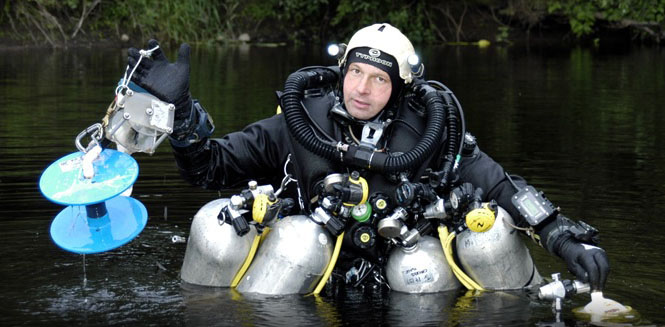
Cave Diver Artur Kozlowski
Kozlowski - known to friends as Artur Conrad - had been living in Ireland for several years and was regarded as one of Ireland's most experienced cave divers. He was previously highlighted on Afloat.ie for his lecture on cave diving at NUI Galway late last year.
He was also the holder of a number of diving records in the UK and Ireland, including longest and deepest traverse of a cave at 103m.
He had spent the last two years exploring the subterranean cave network in south Galway, and was on the final day of an expedition this week when tragedy struck.
Friend and diver Jim Warney, who found Kozlowski, said it took an hour to locate the body in a narrow passage. His oxygen tanks - which were known to have enough air for at least six hours - and a guide rope were still attached.
Rescuers have requested assistance from a UK dive rescue team to help recover the body.
The Irish Independent has more on the story HERE.




























